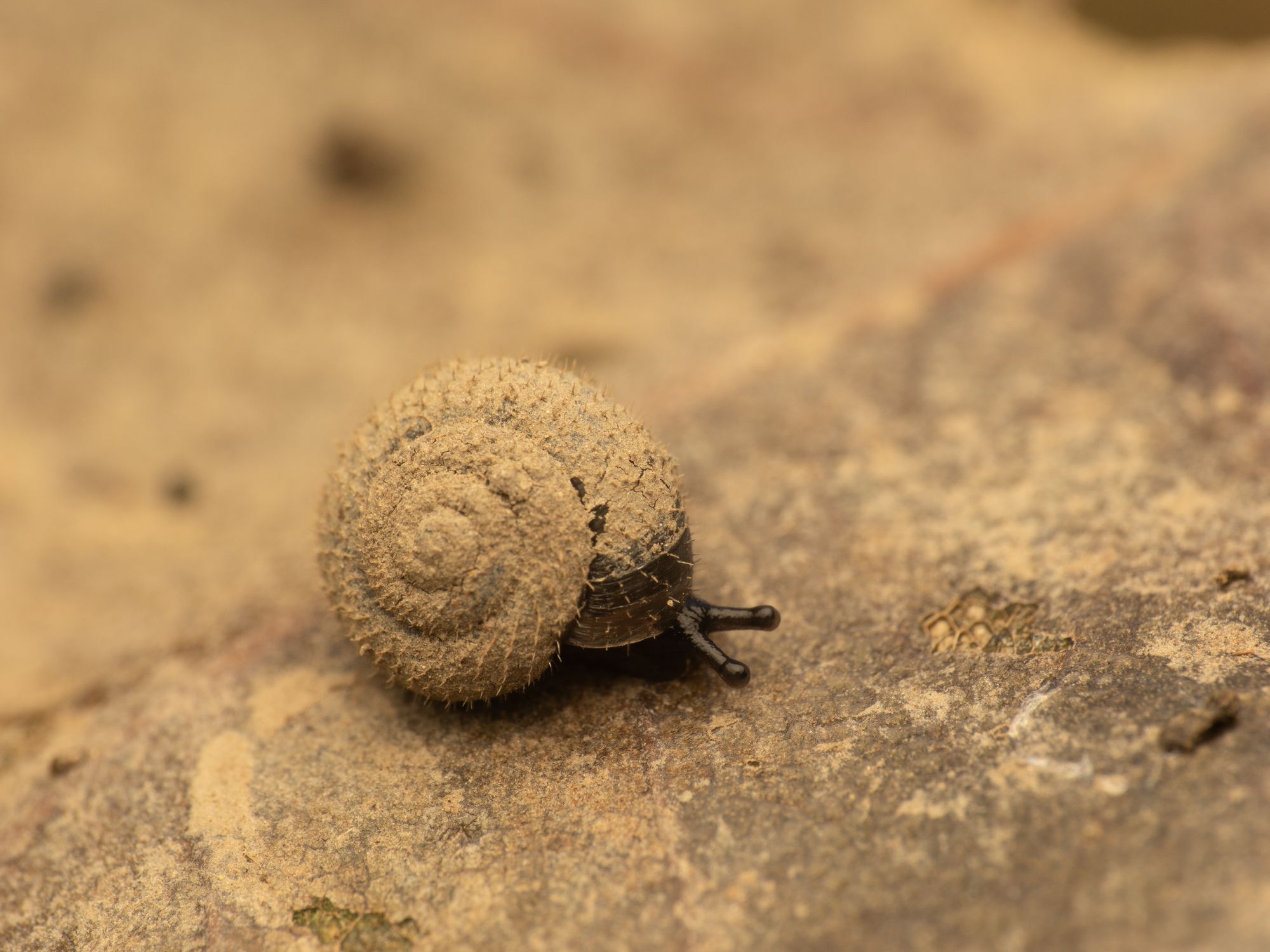- News
- Science

 CloseSnails sprint through the rain at World Championship in Norfolk
CloseSnails sprint through the rain at World Championship in Norfolk
Sign up for our free Health Check email to receive exclusive analysis on the week in health
Get our free Health Check email
Get our free Health Check email
 Email*SIGN UP
Email*SIGN UPI would like to be emailed about offers, events and updates from The Independent. Read our Privacy notice
A new initiative sees conservationists and citizen scientists uniting to protect London’s "charming little" German hairy snail.
This rare species, named for the minute hairs covering its shell, ranks among the UK’s most endangered molluscs. The finger-sized creature now survives in only small, fragmented sections of its historic damp riverside habitat, exclusively along the River Thames.
Its distinctive fine hairs, which adorn its slim, round shell, are believed to aid in moisture regulation, ensuring its slime remains sufficiently adhesive to cling to slippery riverside debris and its food plants.
The project team, led by Citizen Zoo and Zoological Society of London (ZSL), has started a series of surveys to better understand the species’ distribution across the capital and inform conservation action.
Taking place over the last couple of months, the team has been searching and identifying species at both known and potential river sites in boroughs such as Newham, Richmond upon Thames and Barnet.
 Conservationists and citizen scientists have joined forces for a project to save London's hairy ice-aged snail. (Gino Brignoli/PA Wire)
Conservationists and citizen scientists have joined forces for a project to save London's hairy ice-aged snail. (Gino Brignoli/PA Wire)The team hopes to then build a stronger picture of the snail’s current UK range, and identify how habitat restoration, pollution management and the careful movement of snails between sites can help recover their numbers.
Joe Pecorelli, freshwater conservation programme manager at ZSL, said: “This charming little snail has called our riverbanks and wetlands home for thousands of years – yet it is sadly now very rare in the UK, potentially restricted to just a few sites along the Thames.
“These surveys will help us understand how the snail is faring and how we can protect it – not only securing their future for years to come, but also helping safeguard green spaces throughout London for people and wildlife for future generations.”
The German hairy snail is listed as a priority species for conservation efforts in the London biodiversity action plan.
Although first recorded in the UK in 1982, fossilised remains indicate that the German hairy snail has called the UK home since at least the Stone Age – and potentially even as far back at the last Ice Age, when Britain was still joined to mainland Europe.
During this period, the Thames was still connected to the Rhine – Germany’s longest river – which today empties into the North Sea.
By learning more about the current strongholds of the rare snail, the team hopes to ensure its survival and take measures to protect and rewild the capital’s riverine habitats.
These habitats will then be better able to support a wealth of other native species that call the city’s waterways home, such as water voles, dragonflies and kingfishers, according to the conservationists.
Elliot Newton, director of rewilding at Citizen Zoo, said: “The German hairy snail is a species that helps spark imagination and open people’s minds to the curious and diverse wildlife that can thrive across Greater London.
“It reminds us of the remarkable natural world that exists right on our doorstep.
“The surveys show how, by working together across the capital with many partners and empowering local communities, we can gain a deeper understanding of London’s more hidden biodiversity and take steps to protect it.”
The project is running in partnership with London Wildlife Trust, the Conchological Society of Great Britain and Ireland, Greenspace Information for Greater London CIC and the Port of London Authority, and with funding support from Thames21 and the Conchological Society of Great Britain and Ireland.
More about
snailsMolluscsRiver ThamesZoological Society of LondonJoin our commenting forum
Join thought-provoking conversations, follow other Independent readers and see their replies
Comments

